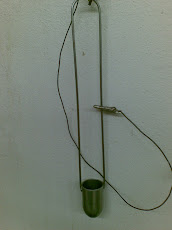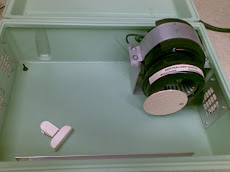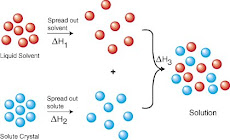With so much attention paid to
cleaning and disinfecting surfaces and items like linens, infection
control-minded facilities often over- look the source of more than one-third of
nosocomial infections — the air. Long-established airborne precautions are rarely
used in long-term care facilities, according to the Agency for Healthcare
Research and Quality. Experts advise how to reverse that.
1.Understand the risks. Influenza
is by far the most prevalent airborne pathogen, and tuberculosis is the second
most serious, according to Gina Pugliese, RN, MS, FSHEA, vice president
emeritus of the Premier Safety Institute®. That's because the elderly are at
high risk of reactivation of an old, latent infection, and early symptoms are
not the usual cough and high fever.
Other common airborne infections
include Norovirus, C. diff, MRSA, pneumonia, respiratory syncytial virus (RSV),
parainfluenza, coronavirus, rhinoviruses, adenoviruses, disseminated shingles
and human metapneumovirus.
Another surprise: Many of these
also can spread in other ways.
“Illnesses transmitted through
the air occur when infectious agents spread via the airborne or droplet routes.
But contact with these germs can also spread these illnesses,” notes Deva Rea,
clinical science liaison for PDI.
2. Know your facility's
vulnerabilities. Airborne germs are opportunistic and seek weakness in places
like heating, venting, air-conditioning and water systems.
“Legionella pneumophila does
a great job of surviving in water and in ‘biofilms,' which can develop in water
pipes and other man-made devices,” notes Deb Patterson Burdsall, Ph.D., RN-BC,
CIC, FAPIC, an infection preventionist who also serves as faculty and author on
various projects related to long-term care for the Association for
Professionals in Infection Control and Epidemiology.
Ironically, the air itself is “a
central yet often overlooked transmission vector for dangerous pathogens,” says
Olivia Easly, marketing manager for Novaerus. And while airborne illnesses
typically find a path through coughing and sneezing, germs easily can be
aerosolized through such activities as bed making and vacuuming, she says.
Another vulnerability: group
activities. “These activities may increase communicable infectious disease
exposure and transmission,” Rea says. “The same is also true for occupational
and physical therapy activities.”
3. Housekeeping and maintenance
are vital to prevention. “Environmental service personnel are essential to
infection prevention. Regardless of the pathogen, good environmental cleaning
and disinfection are main prevention strategies,” Rea notes.
Facility maintenance workers are
critical when dealing with certain airborne illnesses such as TB by providing
monitoring of airborne isolation rooms under negative pressure, she adds.
Housekeepers should under- stand
that shaking soiled linens can aerosolize germs, advises Bill Brooks, North
American sales manager for UniMac®.
4. Preparing a rapid response to
an emerging infection is critical. Pugliese notes that staff vigilance can
prevent widespread infection. That's why it's important to understand the
sometimes puzzling early symptoms of an illness such as TB. Once detected, “the
usual principles of airborne isolation apply, which require negative pressure
ventilation and t-tested respirators, per OSHA,” she adds.
“If an outbreak of any airborne-
related illness occurs, it may be necessary to restrict admissions, visitors,
and cohort residents with the same illness,” Rea says.
5. Know how to protect your most
vulnerable residents. Immunocompromised residents can skew normal isolation
precautions.
"With some viral illnesses
such as influenza, RSV, norovirus and adenovirus, an immunocompromised patient
may shed the virus for longer periods of time,” observes Rea. “So it's
recommended to keep patients on isolation precautions for an extended
duration.”
6. It bears repeating: Caregivers
are often unwitting carriers and transmitters of airborne illnesses. That's why
training and adequate and plentiful personal protective equipment are
essential.
Basic, sound personal hygiene
practices such as regular hand washing and staying home when sick should be
enforced. It's also not too late to receive a u shot.
As noted, coughed or sneezed
aerosolized droplets aren't the only way pathogens reach the lungs. Germs on
contaminated surfaces and hands have an insidious way of reaching the mouths
and noses of patients. As Easly reminds, “the CDC and WHO have declared hand
disinfection as the most important standard measurement of hand hygiene in
healthcare facilities as it can lead — if correctly performed — to a drastic
reduction of nosocomial infections.”
Mistakes to avoid
1. Relying on consumer-grade air
filtration. The germ- laden air of nursing homes calls for industrial strength solutions.
Consider air sterilization systems that eradicate, not filter, germs.
2. Overlooking vulnerable areas
and practices. Biofilm in standing water is a breeding ground for illnesses.
Shaking soiled linens can actually aerosolize numerous pathogens.
3. Neglecting to have air
isolation precautions, including negative pressure rooms, available when a
nasty airborne infection is first spotted.











































No hay comentarios:
Publicar un comentario